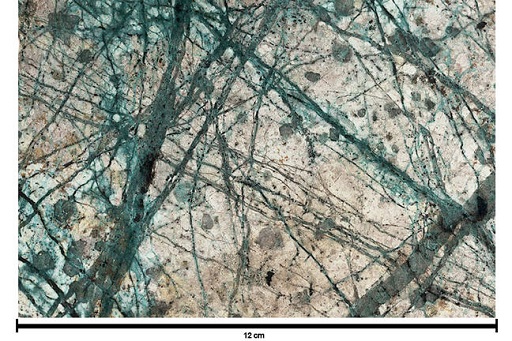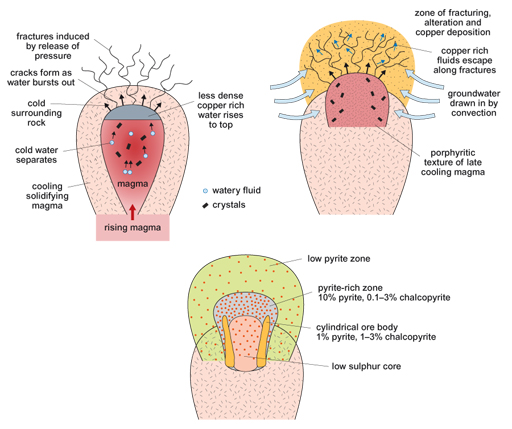2.13 Bursting balloons of copper mineralisation
Porphyry copper deposits are usually formed by small igneous intrusions – formed by hot, molten rock forcing their way through existing rocks. The ore minerals that contain the copper are mainly copper sulphides like chalcopyrite (CuFeS2) and bornite (Cu5FeS4), and they’re found in networks of veins called stockwork. Each of the veins are only a few mm across, so you can imagine why it isn’t efficient to try to remove just the copper minerals.
The minerals in the veins are deposited by water being forced through the rocks. As the magma rises through the earth, it cools and solidifies first at the edges, where the hot magma is in contact with the cold rock which it is being forced through. It rises up like a balloon because it is hotter and less dense than the rocks that surround it, just like a hot air balloon.
The magmas which form the ores also contain water, not a lot – probably only about 3% – but still enough to be important. Bubbles of hot water dissolve elements (like copper) which don’t go into the minerals forming as the magma solidifies. The super-heated copper-laden water is even less dense than the surrounding magma and so rises to the top of the balloon of magma. The water starts to expand and form steam, and the overpressure cracks the balloon of solidifying magma, allowing the copper-filled water to burst out, forcing open cracks in the rocks as it goes. As the water reaches cooler rock, it cools down and can no longer keep the copper dissolved, so it’s deposited along the cracks that it’s formed.


